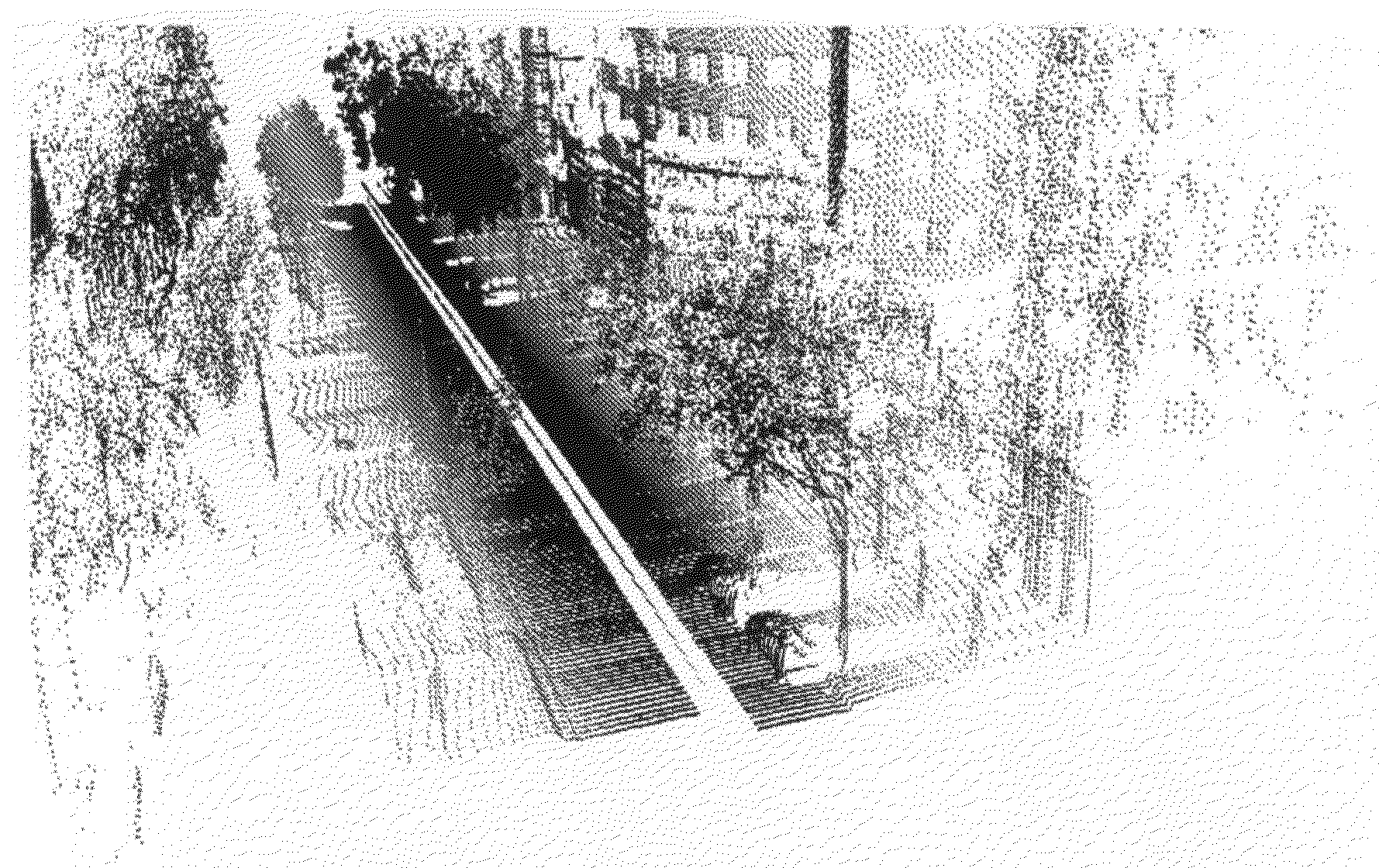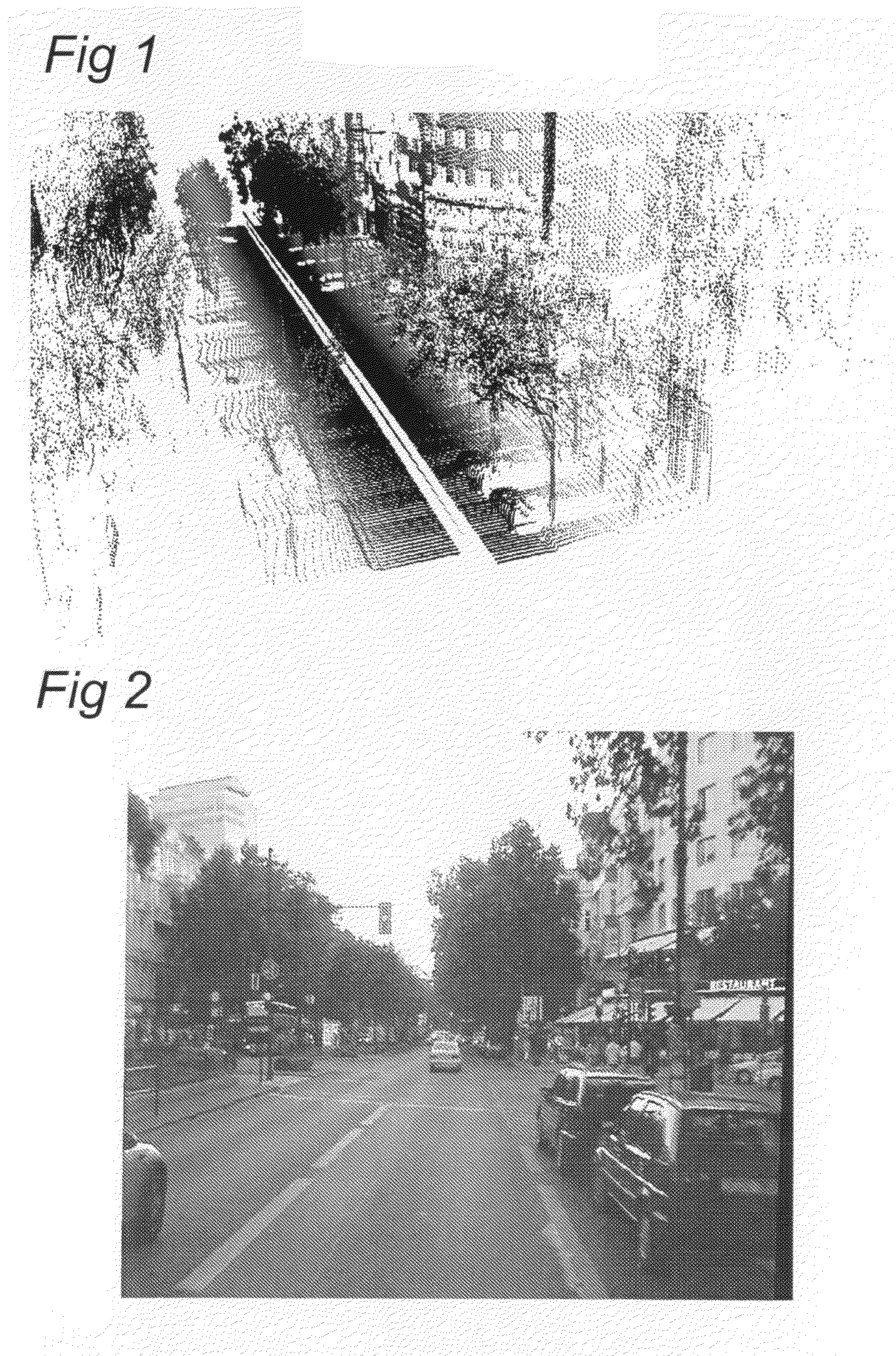Method and apparatus for detecting objects from terrestrial based mobile mapping data
a mobile mapping and object detection technology, applied in the field of methods of detecting objects from terrestrial based mobile mapping data, can solve the problems of high-resolution laser scanners that are expensive, their use in common terrestrial measurements, and the analysis of image sequences is very time-consuming
- Summary
- Abstract
- Description
- Claims
- Application Information
AI Technical Summary
Benefits of technology
Problems solved by technology
Method used
Image
Examples
first embodiment
[0077]the invention comprises the following actions:[0078]1. select regions of interest for laser scanned points;[0079]2. map laser regions of interest to an image, generating a recognition mask;[0080]3. segment region of interest;[0081]4. filter segments by size and shape characteristics;[0082]5. determine whether segment is occluded;[0083]5a. calculate orientation of any occluded segments using the 6 degrees of freedom orientation system;[0084]5b. calculate orientation of non-occluded segments from laser data;[0085]6. select by means of filtering the perpendicular segments.
second embodiment
[0086]In the invention the method comprises the following actions:[0087]1. select regions of interest of laser scanned points;[0088]7. extract perpendicular surfaces from regions of interest;[0089]8. map perpendicular surfaces to images;[0090]9. perform color separation on image corresponding to surfaces;[0091]10. select, by means of filtering, surfaces by size and shape.
[0092]The respective actions of the first and second embodiment will be discussed in more detail below.
[0093]FIG. 3 is a flow diagram of a third embodiment of the method according to the invention. In the third embodiment the first and second embodiments have been combined. The left path corresponds to the first embodiment and the right path corresponds to the second embodiment. It has been found that the first embodiment and second embodiment perform uncorrelated processes. The method according to the first embodiment, which is based on image based recognition of planar objects enables us to detect 98% of the objec...
PUM
 Login to View More
Login to View More Abstract
Description
Claims
Application Information
 Login to View More
Login to View More - R&D
- Intellectual Property
- Life Sciences
- Materials
- Tech Scout
- Unparalleled Data Quality
- Higher Quality Content
- 60% Fewer Hallucinations
Browse by: Latest US Patents, China's latest patents, Technical Efficacy Thesaurus, Application Domain, Technology Topic, Popular Technical Reports.
© 2025 PatSnap. All rights reserved.Legal|Privacy policy|Modern Slavery Act Transparency Statement|Sitemap|About US| Contact US: help@patsnap.com



